![[MOVIE] Beautiful Nikko! Must-See Spots to Discover Japan’s Nature, History, and Culture](https://rimage.gnst.jp/livejapan.com/public/article/detail/a/00/02/a0002068/img/basic/a0002068_main.jpg?20181108114129&q=80)
Nikkō, full of lush nature, breathtaking historical sites, and a one-of-a-kind atmosphere that is almost mysterious. The city is well north of Tokyo, but a train called the Express Spacia takes you from Tokyo’s Asakusa Station to Nikkō Station in merely one hour and 50 minutes.
This makes Nikkō not only a favorite retreat for Tokyoites but also an absolute must-see spot for tourists. We made our way to the mystical place ourselves and asked travelers what made them fall in love with beautiful Nikkō! Join us on our journey through rich nature and century-old historic sites!
Tourist’s Must-See Recommendations
1) Nikkō Kanaya Hotel
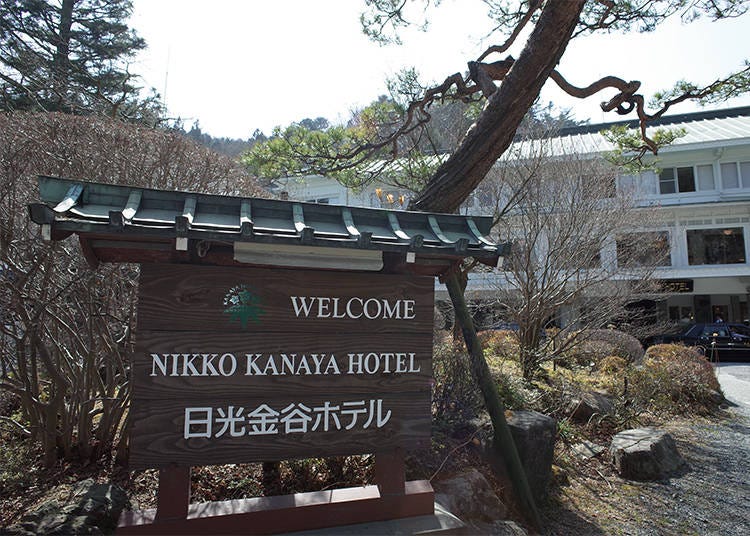
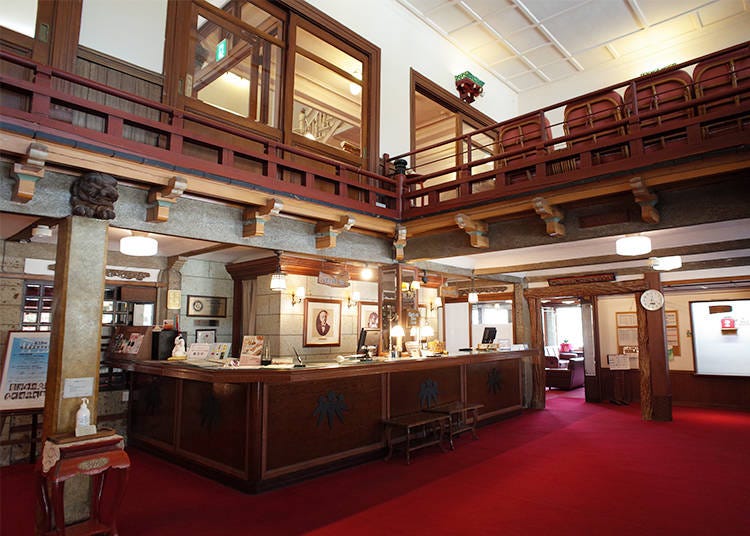
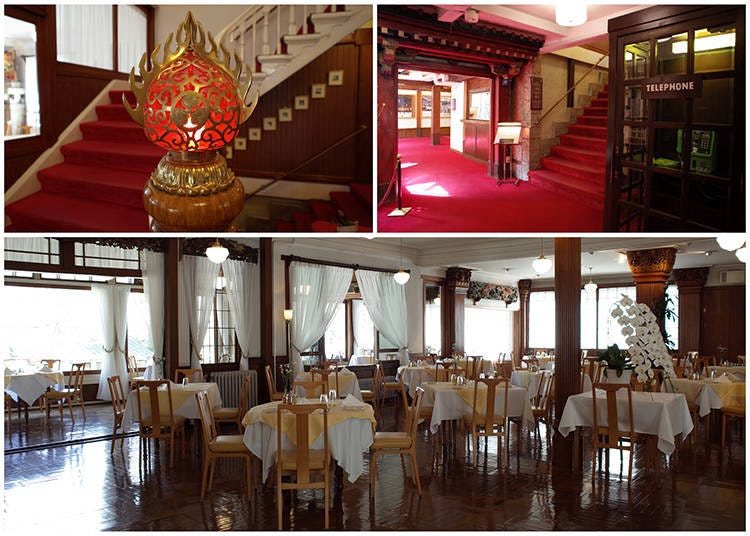
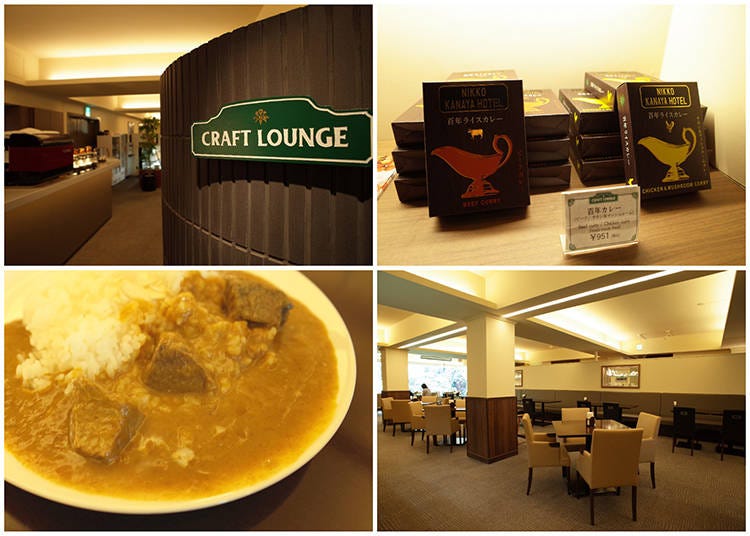
Nikkō Kanaya Hotel is a 10-minute taxi drive away from Nikkō Station and boasts the status as the oldest classic resort hotel in all of Japan. Since its opening in 1873, many celebrities have lost their heart to the atmospheric hotel and even nowadays, its traditional charm seems to cast a spell on visitors from all around the world. It comes as no surprise that the hotel was registered as one of Japan’s tangible cultural properties.
Nikkō Kanaya Hotel is a outrageously beautiful fusion between Western and Japanese aesthetics, a now historic style that was dominant at the time of its construction. Walking through the corridors will make you feel like you’ve fallen through a crack in time, showing you an authentic piece of Japan’s rich history.
It’s not just a feast for the eyes, however. Nikkō Kanaya Hotel serves the “100-Year Rice Curry,” based on a century-old curry recipe that was rediscovered by chance in the hotel’s storage rooms in 2003. Let yourself be engulfed by history from its most beautiful, tastiest side!
Access: Tōbu Nikkō Station, JR Nikkō Station; 5 minutes by bus to Shinkyo bus stop (via Okuhoso’o, Chuzenji Onsen, Yumoto Onsen)
*A free shuttle bus to the hotel is available from Tobu Tōbu Nikkō Station.
-

-
Address
1300 Kami Hatsuishimachi, Nikko-shi, Tochigi, 321-1401
View Map -
Nearest Station
Tobu Nikko Station (Tobu Nikko Line)
26 minutes on foot
-
Address
1300 Kami Hatsuishimachi, Nikko-shi, Tochigi, 321-1401
Tourist’s Must-See Recommendations
2) Kanmangafuchi Abyss
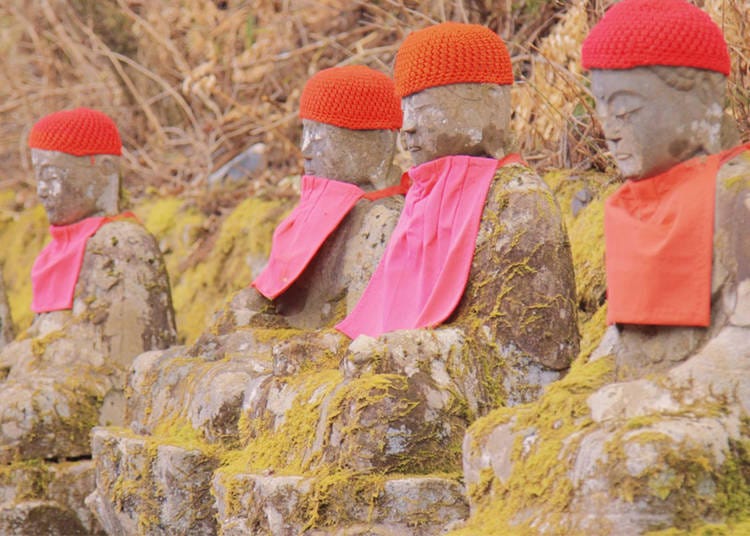

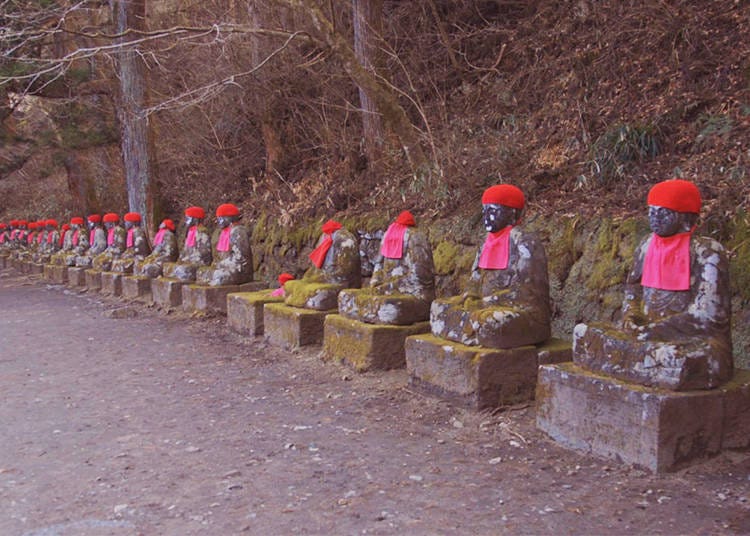
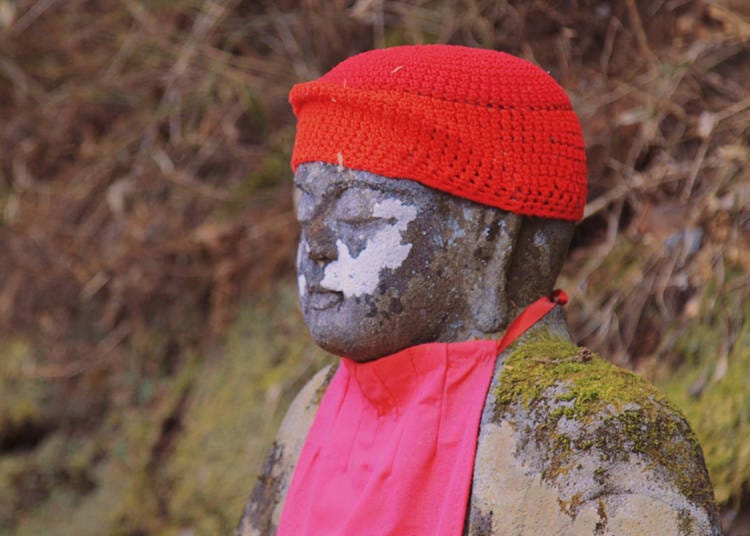
Among the many stunning nature spots to discover around Nikkō is Kanmangafuchi Abyss. It’s a beautiful gorge that was shaped by the lava of nearby Mount Nantai. Nowadays, only Daiyagawa River flows peacefully through the scenic gorge. What makes Kanmangafuchi Abyss unique and somewhat enigmatic, however, is the many jizo statues sitting calmly along the way – about 70 in total.
Silently they sit, looking calmly upon passers-by, river, and nature and it is impossible to not to become thoroughly enchanted by this one-of-a-kind scenery. The travelers we met as we visited Kanmangafuchi Abyss share this opinion: “It’s a real ‘Japanese’ landscape and we like it a lot” and “The jizo are really nice to see. We’ve never seen them before” are just two opinions on the beauty of Kanmangafuchi Abyss.
Access: Tōbu Nikkō Station, JR Nikkō Station; 15 minutes by bus to Sogokaikan-mae bus stop (via Chuzenji Onsen, Yumoto Onsen)
-
Kanmangafuchi Abyss憾満ヶ淵
- Address Nikko, Nikko-shi, Tochigi, 321-1415, Japan
- Phone Number 0288-22-1525
Tourist’s Must-See Recommendations
3) Shinkyō Bridge
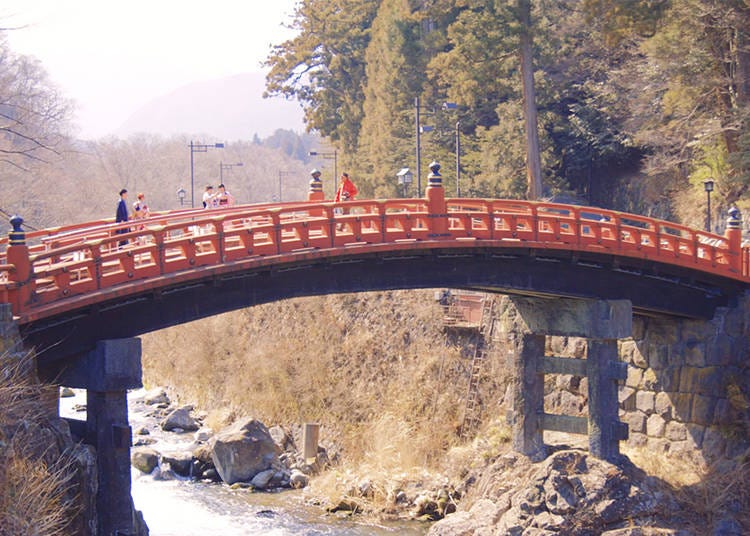
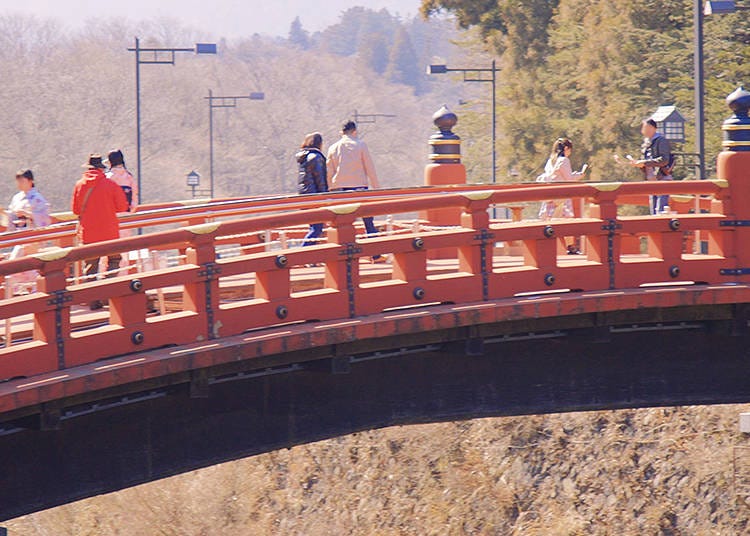
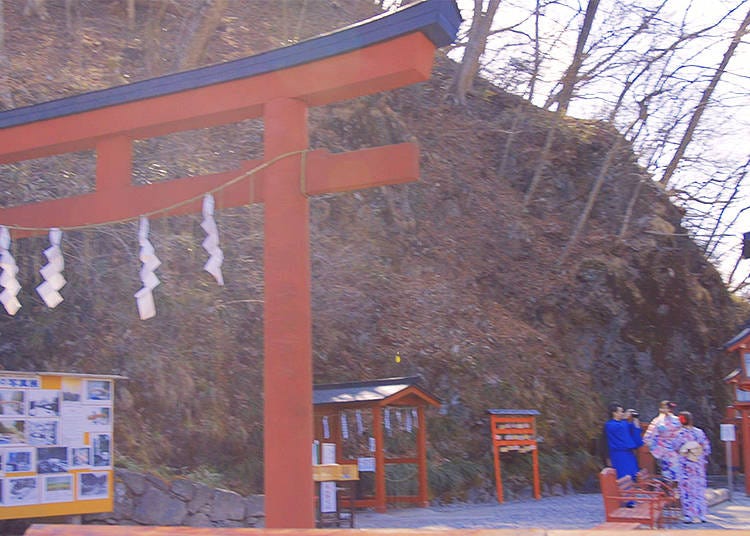
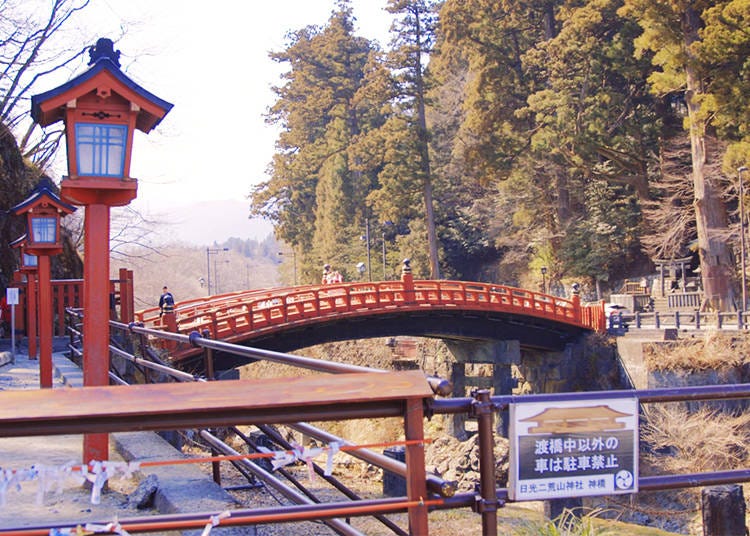
Shinkyō Bridge is a stunning construction that spans the Daiyagawa River and leads to Futarasan Shrine at the foot of the mountain. The vermilion-colored wood bridge is an immediate eyecatcher, and yet seems to fit into the lush scenery completely naturally. Shinkyō Bridge has been honored as a sacred bridge since the Nara period (8th century), and nowadays it holds the rank as one of Japan’s three most beautiful bridges, as well as a World Heritage Site.
Needless to say, it’s an amazing photo spot, but after you’ve taken that perfect picture, pause for a moment to take in what you see and hear. The clear water of the stream, the fresh air of the nature all around you, and the bright red bridge that sets itself off from everything around it while still being in perfect harmony.
As you stand there amidst all of this, it’ll become apparent why this bridge has held such an important place in Japanese culture and history for more than a thousand years.
“The water is stunningly beautiful, as well as the scenery” and “I heard that crossing this bridge brings good luck,” say two tourists visiting Shinkyō Bridge – the sacredness of this place is palpable, no matter where you’re from.
Access: Tōbu Nikkō Station, JR Nikkō Station; 5 minutes by bus to Shinkyō bus stop (via Okuhoso’o, Chuzenji Onsen, Yumoto Onsen) / 20-minute walk from Tōbu Nikkō Station
-
Shinkyō Bridge神橋
- Address Kamihatsuishimachi, Nikko-shi, Tochigi, 321-1401, Japan
- Phone Number 0288-22-1525
Tourist’s Must-See Recommendations
4) Kegon Falls
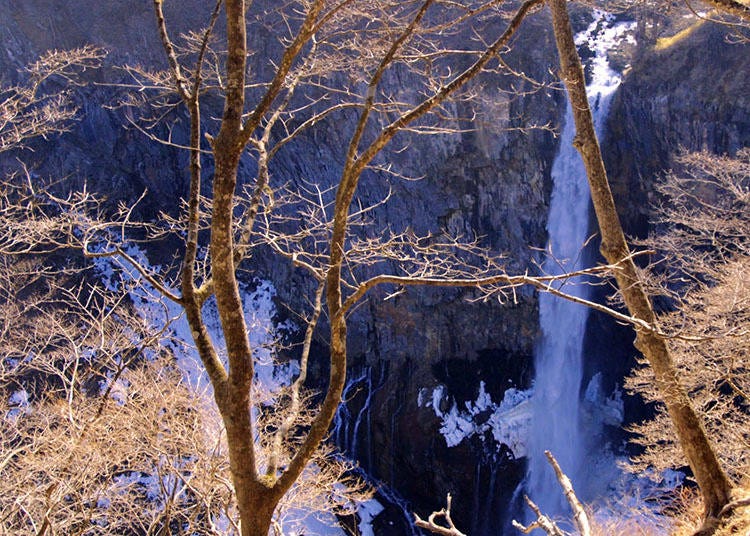
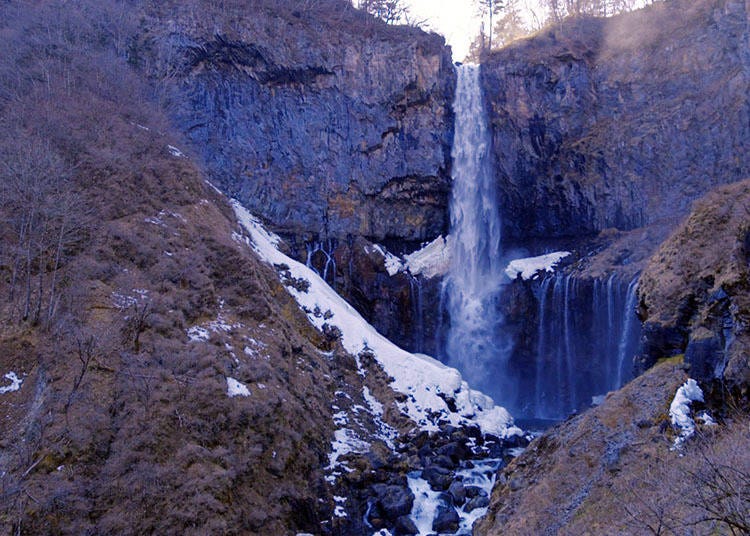
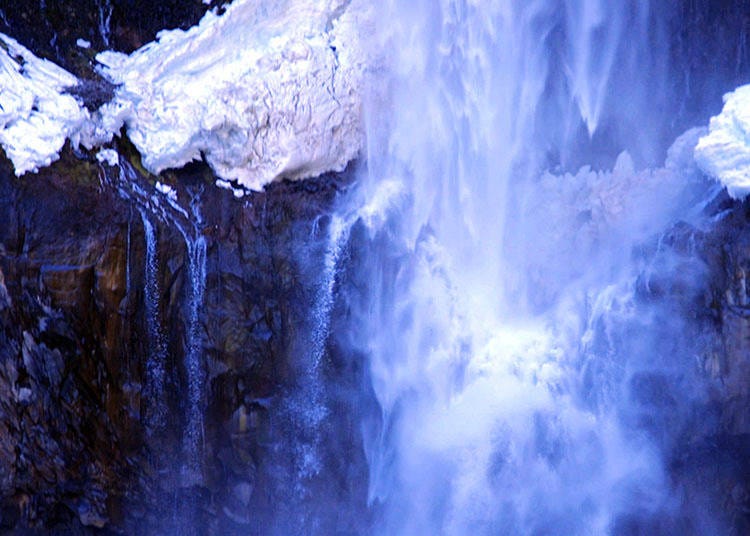
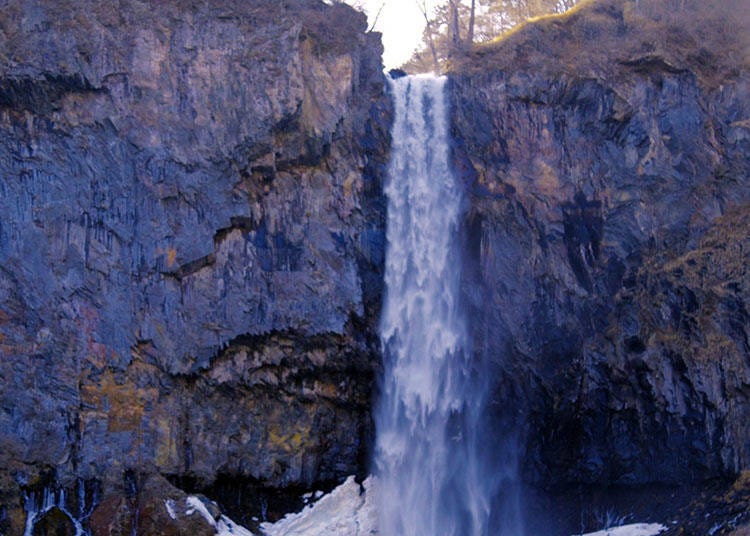
Nikkō boasts a variety of majestic waterfalls around Lake Chuzenji, but the most famous one by far is Kegon Falls. Of course, it is one the Three Great Waterfalls of Japan, fascinating both locals and tourists since thousands of years with its roaring waters. They flow from the nearby Lake Chuzenji and fall from a 97-meter high cliff, a spectacle that is best enjoyed from a special observation platform. An elevator takes you right to the base of the waterfalls, 100 meters deep!
One of the most spectacular things about Kegon Falls is that no matter when you go, the scenery is absolutely stunning. From lush green in summer to a vivid, colorful picture during autumn, there simply is no bad timing. Particularly majestic is the winter view, when Kegon Falls is partly frozen.
Access: Access: Tōbu Nikkō Station, JR Nikkō Station; 40 minutes by bus to Chuzenji Onsen bus stop (via Chuzenji Onsen) / 20-minute walk from Tōbu Nikkō Station
Hours: 8:00 a.m. – 5:00 p.m. (changes by season), open every day
-

-
Address
Chuguushi, Nikko-shi, Tochigi, 321-1661
View Map -
Nearest Station
Nikko Station (JR Nikko Line)
-
Address
Chuguushi, Nikko-shi, Tochigi, 321-1661
Japanese Locals Recommend Traditional Culture Spots
1) Nikkō Ippitsuryū Takase

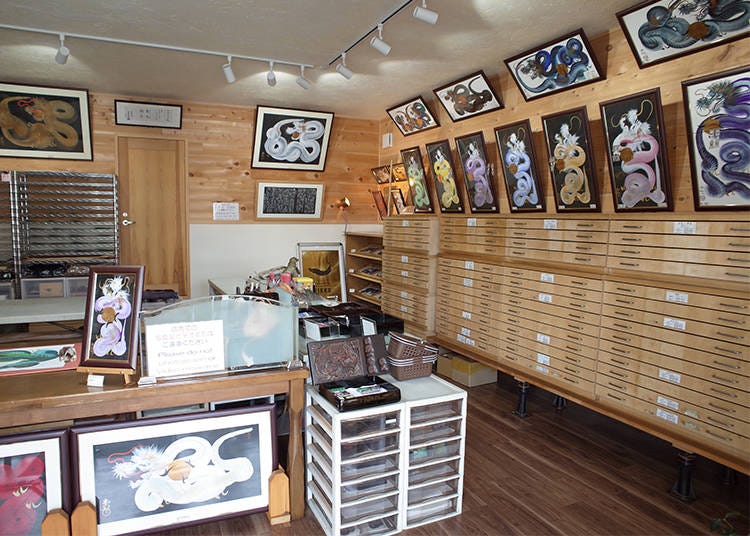
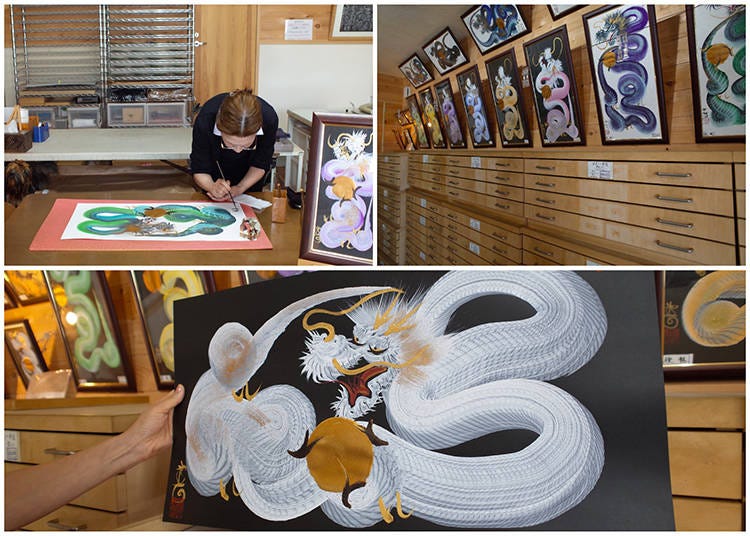
For those who aren’t native Japanese, the word ippitsuryū can prove quite a mouthful, but behind this term hides a fascinating tradition. It means “single-stroke dragon” and, as you might have guessed, describes the technique to paint a dragon with a single brushstroke.
It all began with the first master learning the craft from a Chinese teacher. He then started drawing one-stroke paintings of dragons at the approach of Nikkō Tōshō-gū Shrine. From there, the craft evolved into a true Nikkō tradition. Since long ago, the mythical dragon is regarded as a guardian deity, a protector against evil and misfortune – a majestic and powerful talisman, so to say.
Nikkō Ippitsuryū Takase is the place where the impressive one-stroke dragons are born, and not two of them are alike. They curl in shining colors and vivid expressions, snaking over the paper in the most mesmerizing of ways. “We want you to choose the one that speaks to you,” is the shop’s sworn motto.
There are no online orders – the one-of-a-kind dragon paintings are only sold at the store itself. “When you look at your dragon, its power comes flowing out and it lends you its strength. I wish for people to feel this way, so I put my entire heart into painting,” explains Fumiko Takase, the 3rd-generation master of the Takase family’s ippitsuryū tradition.
Small dragon paintings start at 5,000 yen (tax included, no picture frame), while larger ones start at 10,000 yen and can climb into tens of thousands of yen. However, business card- and postcard-sized dragons make wonderful lucky charms and souvenirs for the very reasonable price of 1,500 yen (tax included).
Take your time and let yourself be inspired by the beautifully painted mythical creatures until you find the one that has been waiting just for you all this time.
Access: Tōbu Nikkō Station, 10 minutes on foot
Hours: 10:00 a.m. – 6:00 p.m.
*Open until 5:00 p.m. during winter (December to March)
Closed: irregularly (generally on Wednesdays)
-
Nikkō Ippitsuryū Takase日光一筆龍 髙瀬
- Address 577, Gokomachi, Nikko-shi, Tochigi, 321-1404, Japan
- Phone Number 0288-25-6467
Japanese Locals Recommend Traditional Culture Spots
2) Nikkō Yuba Seizō
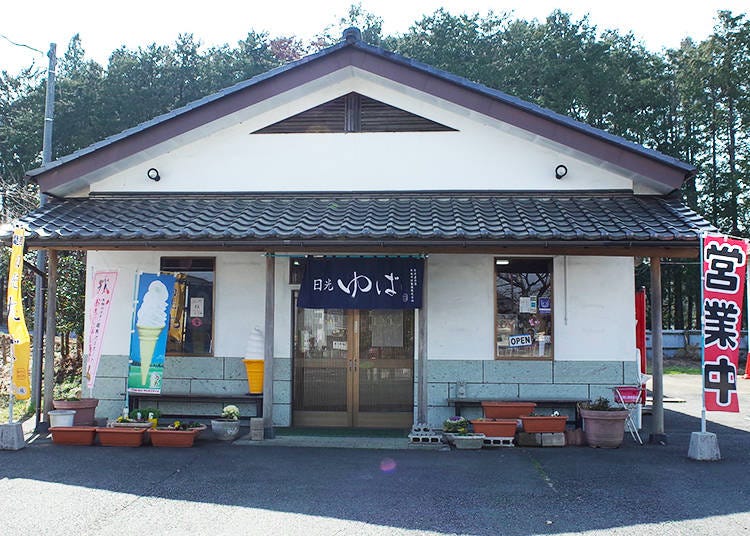
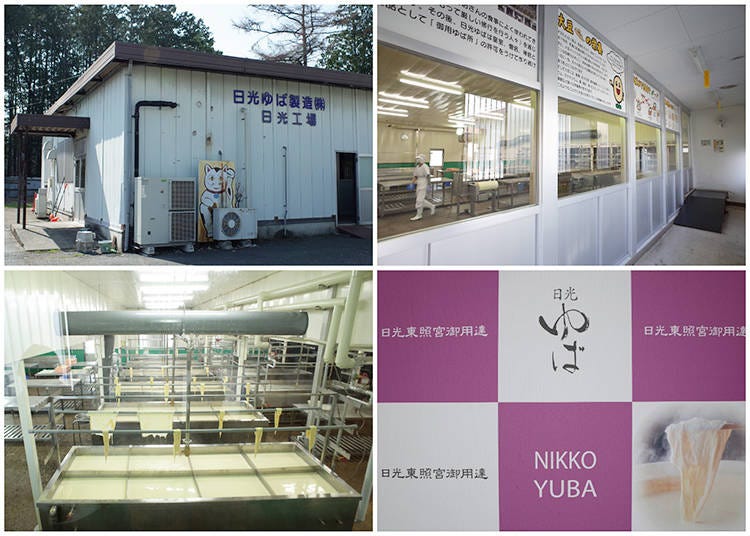
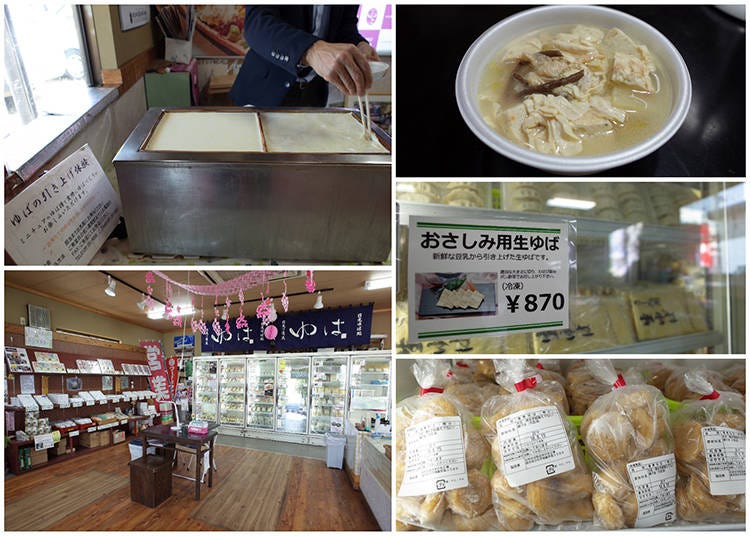
“The west has Kyōto, the east has Nikkō,” is a saying in Japan, demonstrating just how famous Nikkō is among the Japanese population. Rich in culture and history, it of course also doesn’t lack in local delicacies! One of them is yuba, or tofu skin, which has been one of the most important foods for Shintō priests and Buddhist monks.
Soybeans, the base for tofu skin, is rich in protein and hence indispensable if a monk or priest undertakes the harsh ascetic training at Nikkō’s shrines or temples. The other reason why tofu skin has become such a regional delicacy for Nikkō is that of the abundance of fresh, clean groundwater that makes for particularly delicious yuba. Another city famous for this food is Kyōto, where it is pulled from the soy milk at the end of the container and as thin as a leaf, earning it the nickname of “leaf tofu skin.”
In Nikkō, on the other hand, people pull the tofu skin up from the center of the container. It is thicker and has a distinct wavy pattern on it, which is why it is called “wave tofu skin.” Compared to Kyōto, Nikkō’s tofu skin is much thicker and richer in taste. Among the various tofu skin dishes, agemaki yuba is especially famous in the area. It’s deep-fried rolls of tofu skin, usually cooked or simmered in broth.
Now to the sightseeing part. Nikkō Yuba Seizō is a tofu skin manufacturer that offers intriguing factory tours, showcasing the tasty, traditional craft. “I want you to enjoy Japan’s traditional food culture, and especially the flavor of soybeans that Nikkō is so famous for,” says Mr. Kozuka of Nikkō Yuba Seizō. While the image of a factory tour can seem stuffy, this one is all but fascinating. The tofu skin is handmade here, a process that’s mesmerizing to watch, and you’ll even get to try your hand at pulling the skin from the soymilk yourself!
Of course, there’s plenty of taste testing, so for all foodies out there, this experience is an absolute must (prior reservation required). At the factory’s shop, you’ll find delicacies such as various kinds of yuba soup (100 yen each), the previously mentioned agemaki yuba (1,000 yen), and yuba sashimi (870 yen, tax excluded of all prices).
Access: 5 minutes by car from Ōzawa IC / Shimotsuke-Ōsawa Station, 10 minutes by car
Hours: 9:00 a.m. – 5:00 p.m. (factory tour from 10:00 a.m. – 3:00 p.m.)
*Please confirm the business days on the official website.
-
Nikkō Yuba Seizō日光ゆば製造
- Address 3589-6, Inokura, Nikko-shi, Tochigi, 321-2344, Japan
- Phone Number 0288-26-4890
0120-26-4890 (free dial)
Japanese Locals Recommend Traditional Culture Spots
3) Nikkōbori
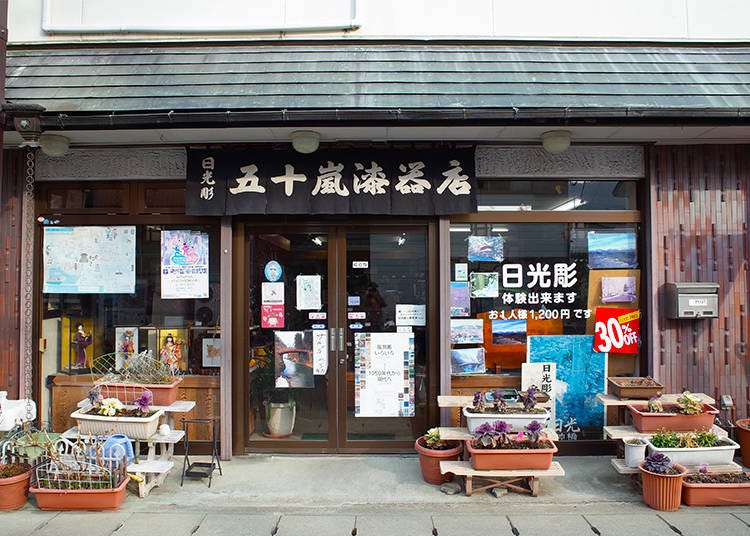

Here’s another local tradition: nikkōbori, or Nikkō woodcarving. Long after Japan’s first shōgun, Tokugawa Ieyasu, died in the early Edo period in the 17th century, craftsmen skilled in woodcarving were brought to Nikkō from all across Japan to help construct Tōshō-gū Shrine, where the famous ruler was going to be enshrined. They are the root of the art that is now known as nikkōbori and its unique style.
It uses a special tool called hikkaki to create deep and powerful carvings. Another prominent feature of this local style is that plants always play a major role in the motif. “We use raw materials only, so the paint doesn’t peel off even if hot water is poured on the wood. You can use it without worrying about damage,” explains Teruyoshi Igarashi, the 4th-generation master of Igarashi Shikki, a woodcarving shop founded in 1931.
In the past, there were numerous woodcarving shops all around Nikkō, but now there’s only four of them left. And yet, as art has had such a cultural and historical impact on the area, it is hard to imagine a future without it. Just looking at the many masterfully crafted items is a wonderful journey into the world of Japan’s traditional craftsmanship, but Igarashi Shikki is also a treasure trove of one-of-a-kind souvenirs.
Particularly beautiful is the shop’s stamp case, engraved with the World Heritage Site of Shinkyō Bridge (2,000 yen), or an intricately made chopstick rest (300 yen, tax excluded of all prices). Particularly noteworthy is that Igarashi Shikki offers a nikkōbori workshop in which you’ll create an original work of your own (1,200 yen, about 1.5 hours) – there’s no better way to experience traditional culture than by trying it firsthand.
Tōbu Nikkō Station, 2 minutes on foot
Hours: 9:00 a.m. – 5:00 p.m.
-
Igarashi Shikki五十嵐漆器店
- Address 17-7, Matsubaracho, Nikko-shi, Tochigi, 321-1406, Japan
- Phone Number 0288-54-1599
*Prices and options mentioned are subject to change.
*Unless stated otherwise, all prices include tax.
Popular Tours & Activitiess
Recommended places for you
-

Tokyo Metropolitan Government
Landmarks
Shinjuku
-

Naritasan Shinshoji Temple
Temples
Narita
-

Ueno Zoo (Ueno Zoological Gardens)
Zoos, Aquariums & Botanical Gardens
Ueno
-

The Imperial Palace
Other Architecture
Tokyo Station
-

TOKYO SKYTREE®
Landmarks
Ryogoku / TOKYO SKYTREE(R)
-

Kappabashi Street
Old Towns (Shitamachi)
Asakusa
-

Keisei × Keikyu 16-Temple Goshuin Tour: Discover Deeper Tokyo & Yokohama
by: Guest Contributor
-

[Extended Offer!](12% OFF KKday Coupon) Mt. Fuji Autumn Leaves, Powder Snow & More! 15 Best Tours to Experience Japan in Fall & Winter
-

Enjoy Japan's Gorgeous Winter Lights! Ride the Romancecar to Shonan no Hoseki Illumination
by: Guest Contributor
-

Get Ready to Catch 'Em All! First Ever Permanent Outdoor Pokémon Park Opening Near Tokyo!
-

Don't Miss Out! The One Thing You Must Do Before Shopping at Mitsui Shopping Park LaLaport: Get Your Max 10% OFF Coupon Book
-

The Best Japanese Food Representing 2025! 'Dish of the Year®' Annual Award Results Announced
Inspiration for Accommodations
-

Enjoy Mt. Fuji from the Comfort of Your Room! Recommended Ryokan with Mt. Fuji View
-

Stay Near the Cherry Blossoms! Hotels for Cherry Blossom Viewing in Tokyo
-

Family-Friendly Hotels with Free Shuttle to Disneyland: Convenient Access for a Magical Stay
-

Top Ranked Hakone Hotels with Mt. Fuji View: Enjoy Stunning Scenery from Your Private Space
-

Convenient Tokyo Hotels with Airport Shuttle: Ideal for Families and Heavy Luggage
-

Stunning Tokyo Tower View Hotels: Enjoy Spectacular Scenery from Your Private Space
-

Convenient Asakusa Hotels with Kitchens: Ideal for Extended Family Visits
-

Experience Luxury: Hakone's 10 Best Five-Star Accommodations
-

Enjoy Mt. Fuji Autumn Leaves! Top Hotels Near the Popular Autumn Leaves Corridor
-

Experience Hakone Fall Foliage from Your Room with Stunning Views
-

4 Best Historic Neighborhoods to Experience Old Tokyo
-

Japan's Bath Culture: Tips You Should Know!
-

Tokyo Station Top 10 Sweets Ranking!
-

Discover The Dreamy Historical Village of Omori - Home to World Heritage Iwami Ginzan Silver Mine (Shimane Prefecture)
-

Autumn in Japan 2025: Fall Foliage Forecast & Where to Enjoy the Colorful Leaves (+Tour Info)
-

Perfect Tokyo Day Trip Itinerary: Visiting Tokyo’s Best Spots for First-Timers!
- #best ramen tokyo
- #what to buy in ameyoko
- #what to bring to japan
- #new years in tokyo
- #best izakaya shinjuku
- #things to do tokyo
- #japanese nail trends
- #what to do in odaiba
- #onsen tattoo friendly tokyo
- #daiso
- #best sushi ginza
- #japanese convenience store snacks
- #best yakiniku shibuya
- #japanese fashion culture
- #best japanese soft drinks













